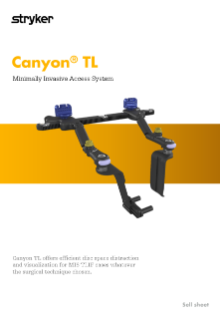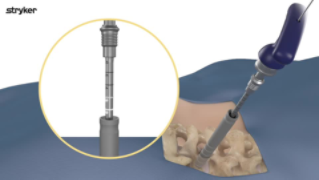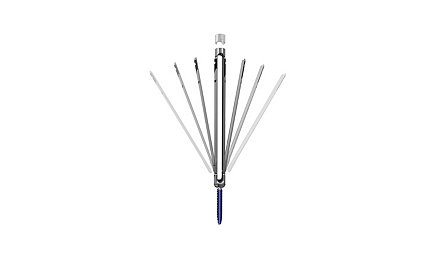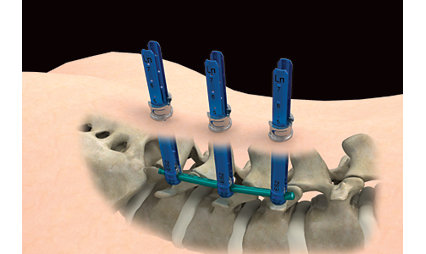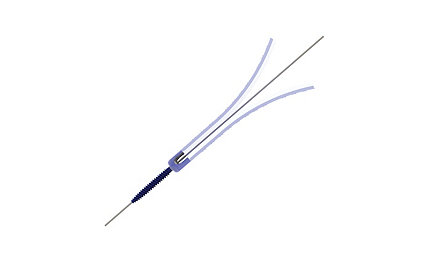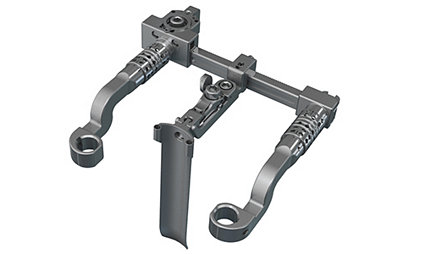Canyon TL
Minimally Invasive Access System
Canyon TL offers disc space distraction and visualization for various MIS TLIF techniques

Main features
- Screw-based retractor design allows for stability and limits retractor movement
- Top-loading frame with independent arms to facilitate easy, rigid blade attachment
- Retractor Frame provides toeing, +25º and -5º, to increase disc space access and visualization
- Low-profile lateral blades with 15º bend allowing for increased access
- Optional integrated light source
- Canyon TL is compatible with the Everest MI and Everest MI XT spinal fixation systems.
Related products
Everest Minimally Invasive XT
The Everest Minimally Invasive (MI) XT Spinal System features Everest screw technology with metal extensions for minimally invasive rod delivery and reduction.
Learn moreEverest Minimally Invasive
The Everest Minimally Invasive Spinal System is a cannulated top-loading polyaxial pedicle screw system featuring the ability to accommodate titanium and CoCr rods of two different diameters. The dual-lead thread pattern allows for faster insertion and increased pullout strength [1]. The mixed-metal (Ti/CoCr) tulip minimised head splay and demonstrated improved biomechanical performance when tested against an all-titanium alloy screw [2]. These implants and instruments are cannulated for use with the Serengeti Minimally Invasive Retractor System.
Learn moreLITe Pedicle Based Retractor (PBR)
A retractor that facilitates a less invasive approach to spine surgery while helping to minimise the typical challenges of a minimally invasive approach, this system leverages ES2 Screw Technology by docking directly onto the ES2 screws, which allows for rigid placement and pedicle distraction capabilities. It provides you with a less invasive access option that helps you directly visualise the surgical site and identify anatomical structures. By placing the ES2 screw first and docking the retractor second, you can preserve key anatomical landmarks and then use them for orientation.
Learn moreThis document is intended solely for the use of healthcare professionals. The products depicted are in accordance with applicable Regulations and Directives.
Please find our full product disclaimer here.
PRTTL-WB-35_29853

